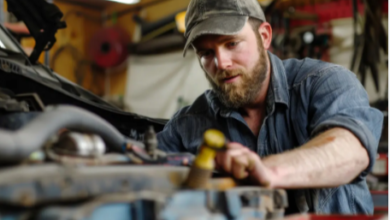How the OAS Clawback Will Affect You in 2025: A Complete Guide

Understanding the OAS Clawback Mechanism
Defining the Old Age Security Clawback
Okay, so what is this OAS clawback thing everyone’s talking about? Basically, it’s when the government reduces or even eliminates your Old Age Security (OAS) pension payments because your income is too high. It’s officially called the “OAS recovery tax,” but most people just call it the clawback. Think of it as a way for the government to get back some of the OAS money they paid you if you’re doing pretty well financially. It’s not a flat tax; it’s based on how much your income exceeds a certain threshold. If you’re below that threshold, you get your full OAS. Above it? Get ready for some of it to be clawed back.
How the Clawback Threshold is Determined
The clawback threshold isn’t some random number they pull out of a hat. It’s actually tied to your income and adjusted each year to account for inflation. So, what was the threshold last year might be different this year. The government announces the new threshold every fall for the next tax year. For 2025, the income threshold is $86,912. If your total income is above that, the clawback kicks in. It’s important to keep an eye on this number because it directly affects how much OAS you’ll actually receive. The government uses your individual income to determine if you are subject to the clawback, not your household income.
The Progressive Nature of the OAS Clawback
The OAS clawback is progressive, meaning the more income you have above the threshold, the more of your OAS gets clawed back. It’s not an all-or-nothing situation until you reach a certain income level. For every dollar you earn above the threshold, your OAS payments are reduced by 15 cents. This continues until your entire OAS is clawed back. So, someone with a slightly higher income will have a smaller portion of their OAS clawed back compared to someone with a significantly higher income. It’s designed to target those who are financially comfortable while still providing some support to those with moderate incomes.
The clawback is calculated based on your individual net income, as reported on your tax return. This includes income from employment, investments, pensions, and other sources. It’s important to accurately report all income to ensure the clawback is calculated correctly.
Here’s a quick breakdown:
- Income below threshold: Full OAS benefit.
- Income slightly above threshold: Partial clawback.
- Income significantly above threshold: Full OAS clawback.
Who Will Be Impacted by the OAS Clawback in 2025?
It’s important to understand who exactly will feel the pinch of the Old Age Security (OAS) clawback in 2025. It’s not everyone receiving OAS, but rather those with higher incomes. Let’s break it down.
Identifying High-Income Seniors
The OAS clawback primarily affects seniors whose individual income surpasses a certain threshold. This threshold changes annually, so for 2025, it’s important to keep an eye on the official number released by the government. Generally, we’re talking about individuals who have significant income from sources beyond just their OAS pension, such as investments, private pensions, or rental income. It’s not just about being ‘rich’; it’s about having an income level that the government deems high enough to warrant a reduction in OAS benefits.
Impact on Different Income Brackets
The impact of the OAS clawback varies depending on how far above the threshold your income is. The clawback is progressive, meaning the higher your income, the more of your OAS benefit you’ll have to repay. Here’s a simplified illustration:
| Income Range (Approximate) | Impact on OAS | Example Scenario |
|—————————–|——————————————————————————————————————————————————————————————————————————————————————————————————————————————————————————————————————————————————————————————————————————————————————————————————————————————————————————————————————————————————————————————————————————————————————————————————————————————————————————————————————————————————————————————————————————————————————————————————————————————————————————————————————————————————————————————————————————————————————————————————————————————————————————————————————————————————————————————————————————————————————————————————————————————————————————————————————————————————————————————————————————————————————————————————————————————————————————————————————————————————————————————————————————————————————————————————————————————————————————————————————————————————————————————————————————————————————————————————————————————————————————————————————————————————————————————————————————————————————————————————————————————————————————————————————————————————————————————————————————————————————————————————————————————————————————————————————————————————————————————————————————————————————————————————————————————————————————————————————————————————————————————————————————————————————————————————————————————————————————————————————————————————————————————————————————————————————————————————————————————————————————————————————————————————————————————————————————————————————————————————————————————————————————————————————————————————————————————————————————————————————————————————————————————————————————————————————————————————————————————————————————————————————————————————————————————————————————————————————————————————————————————————————————————————————————————————————————————————————————————————————————————————————————————————————————————————————————————————————————————————————————————————————————————————————————————————————————————————————————————————————————————————————————————————————————————————————————————————————————————————————————————————————————————————————————————————————————————————————————————————————————————————————————————————————————————————————————————————————————————————————————————————————————————————————————————————————————————————————————————————————————————————————————————————————————————————————————————————————————————————————————————————————————————————————————————————————————————————————————————————————————————————————————————————————————————————————————————————————————————————————————————————————————————————————————————————————————————————————————————————————————————————————————————————————————————————————————————————————————————————————————————————————————————————————————————————————————————————————————————————————————————————————————————————————————————————————————————————————————————————————————————————————————————————————————————————————————————————————————————————————————————————————————————————————————————————————————————————————————————————————————————————————————————————————————————————————————————————————————————————————————————————————————————————————————————————————————————————————————————————————————————————————————————————————————————————————————————————————————————————————————————————————————————————————————————————————————————————————————————————————————————————————————————————————————————————————————————————————————————————————————————————————————————————————————————————————————————————————————————————————————————————————————————————————————————————————————————————————————————————————————————————————————————————————————————————————————————————————————————————————————————————————————————————————————————————————————————————————————————————————————————————————————————————————————————————————————————————————————————————————————————————————————————————————————————————————————————————————————————————————————————————————————————————————————————————————————————————————————————————————————————————————————————————————————————————————————————————————————————————————————————————————————————————————————————————————————————————————————————————————————————————————————————————————————————————————————————————————————————————————————————————————————————————————————————————————————————————————————————————————————————————————————————————————————————————————————————————————————————————————————————————————————————————————————————————————————————————————————————————————————————————————————————————————————————————————————————————————————————————————————————————————————————————————————————————————————————————————————————————————————————————————————————————————————————————————————————————————————————————————————————————————————————————————————————————————————————————————————————————————————————————————————————————————————————————————————————————————————————————————————————————————————————————————————————————————————————————————————————————————————————————————————————————————————————————————————————————————————————————————————————————————————————————————————————————————————————————————————————————————————————————————————————————————————————————————————————————————————————————————————————————————————————————————————————————————————————————————————————————————————————————————————————————————————————————————————————————————————————————————————————————————————————————————————————————————————————————————————————————————————————————————————————————————————————————————————————————————————————————————————————————————————————————————————————————————————————————————————————————————————————————————————————————————————————————————————————————————————————————————————————————————————————————————————————————————————————————————————————————————————————————————————————————————————————————————————————————————————————————————————————————————————————————————————————————————————————————————————————————————————————————————————————————————————————————————————————————————————————————————————————————————————————————————————————————————————————————————————————————————————————————————————————————————————————————————————————————————————————————————————————————————————————————————————————————————————————————————————————————————————————————————————————————————————————————————————————————————————————————————————————————————————————————————————————————————————————————————————————————————————————————————————————————————————————————————————————————————————————————————————————————————————————————————————————————————————————————————————————————————————————————————————————————————————————————————————————————————————————————————————————————————————————————————————————————————————————————————————————————————————————————————————————————————————————————————————————————————————————————————————————————————————————————————————————————————————————————————————————————————————————————————————————————————————————————————————————————————————————————————————————————————————————————————————————————————————————————————————————————————————————————————————————————————————————————————————————————————————————————————————————————————————————————————————————————————————————————————————————————————————————————————————————————————————————————————————————————————————————————————————————————————————————————————————————————————————————————————————————————————————————————————————————————————————————————————————————————————————————————————————————————————————————————————————————————————————————————————————————————————————————————————————————————————————————————————————————————————————————————————————————————————————————————————————————————————————————————————————————————————————————————————————————————————————————————————————————————————————————————————————————————————————————————————————————————————————————————————————————————————————————————————————————————————————————————————————————————————————————————————————————————————————————————————————————————————————————————————————————————————————————————————————————————————————————————————————————————————————————————————————————————————————————————————————————————————————————————————————————————————————————————————————————————————————————————————————————————————————————————————————————————————————————————————————————————————————————————————————————————————————————————————————————————————————————————————————————————————————————————————————————————————————————————————————————————————————————————————————————————————————————————————————————————————————————————————————————————————————————————————————————————————————————————————————————————————————————————————————————————————————————————————————————————————————————————————————————————————————————————————————————————————————————————————————————————————————————————————————————————————————————————————————————————————————————————————————————————————————————————————————————————————————————————————————————————————————————————————————————————————————————————————————————————————————————————————————————————————————————————————————————————————————————————————————————————————————————————————————————————————————————————————————————————————————————————————————————————————————————————————————————————————————————————————————————————————————————————————————————————————————————————————————————————————————————————————————————————————————————————————————————————————————————————————————————————————————————————————————————————————————————————————————————————————————————————————————————————————————————————————————————————————————————————————————————————————————————————————————————————————————————————————————————————————————————————————————————————————————————————————————————————————————————————————————————————————————————————————————————————————————————————————————————————————————————————————————————————————————————————————————————————————————————————————————————————————————————————————————————————————————————————————————————————————————————————————————————————————————————————————————————————————————————————————————————————————————————————————————————————————————————————————————————————————————————————————————————————————————————————————————————————————————————————————————————————————————————————————————————————————————————————————————————————————————————————————————————————————————————————————————————————————————————————————————————————————————————————————————————————————————————————————————————————————————————————————————————————————————————————————————————————————————————————————————————————————————————————————————————————————————————————————————————————————————————————————————————————————————————————————————————————————————————————————————————————————————————————————————————————————————————————————————————————————————————————————————————————————————————————————————————————————————————————————————————————————————————————————————————————————————————————————————————————————————————————————————————————————————————————————————————————————————————————————————————————————————————————————————————————————————————————————————————————————————————————————————————————————————————————————————————————————————————————————————————————————————————————————————————————————————————————————————————————————————————————————————————————————————————————————————————————————————————————————————————————————————————————————————————————————————————————————————————————————————————————————————————————————————————————————————————————————————————————————————————————————————————————————————————————————————————————————————————————————————————————————————————————————————————————————————————————————————————————————————————————————————————————————————————————————————————————————————————————————————————————————————————————————————————————————————————————————————————————————————————————————————————————————————————————————————————————————————————————————————————————————————————————————————————————————————————————————————————————————————————————————————————————————————————————————————————————————————————————————————————————————————————————————————————————————————————————————————————————————————————————————————————————————————————————————————————————————————————————————————————————————————————————————————————————————————————————————————————————————————————————————————————————————————————————————————————————————————————————————————————————————————————————————————————————————————————————————————————————————————————————————————————————————————————————————————–title2024-01-02T10:30:00-06:00
Calculating Your Potential OAS Clawback Amount
It’s that time again, let’s figure out how much of your Old Age Security (OAS) might get clawed back. It’s not the most fun thing to do, but knowing what to expect can really help with planning. The clawback, officially called the OAS recovery tax, kicks in if your income is above a certain level. Let’s break down the key figures, the calculation steps, and some helpful resources.
Key Income Figures for 2025
Okay, so the first thing you need to know is the income threshold. For 2025, this is where things get interesting. The exact number isn’t set in stone until later in the year, but we can make a pretty good estimate based on inflation and past trends. Let’s assume, just for the sake of example, that the threshold is around $95,000. This is the point where the clawback starts to bite. Also, there’s a full clawback threshold, where you’d get no OAS at all. Let’s say that’s around $130,000. These are just estimates, remember, but they give you a ballpark.
Here’s a quick table to illustrate:
| Income Range | OAS Clawback Impact |
| Below $95,000 (est.) | No clawback |
| $95,000 – $130,000 (est.) | Partial clawback (calculated pro-rata) |
| Above $130,000 (est.) | Full clawback (no OAS benefits received) |
Step-by-Step Clawback Calculation
Alright, time for some math! Don’t worry, it’s not too scary. The clawback is calculated as 15 cents for every dollar of income above the threshold. So, if our estimated threshold is $95,000, and your income is $100,000, you’d calculate the clawback on the $5,000 difference.
Here’s how it works:
- Figure out your total taxable income for the year. This includes everything: pensions, investment income, employment income, etc.
- Subtract the OAS clawback threshold (let’s use our $95,000 estimate).
- Multiply the difference by 0.15 (15%). This is the amount of OAS you’ll have to pay back.
For example:
- Total Income: $100,000
- Threshold: $95,000
- Difference: $5,000
- Clawback: $5,000 * 0.15 = $750
So, in this scenario, you’d have $750 clawed back from your OAS payments over the year. Keep in mind that this is just an example, and the actual numbers will depend on your specific income and the official threshold.
Tools and Resources for Estimation
Okay, so doing the math by hand is one way to go, but there are also some handy tools out there that can help. The Government of Canada website has a benefits estimator that can give you a rough idea of what to expect. There are also various online calculators that you can find with a quick search. Just be sure to use reputable sources and double-check the numbers.
It’s always a good idea to consult with a financial advisor or tax professional. They can help you understand your specific situation and provide personalized advice. They can also help you explore strategies to minimize the clawback, such as income splitting or maximizing your RRSP contributions.
Remember, planning ahead is key. Knowing what to expect from the OAS clawback can help you make informed decisions about your finances and retirement planning.
Strategies to Mitigate the OAS Clawback
Income Splitting Opportunities
Okay, so income splitting isn’t as straightforward as it used to be, but there are still some legit ways to make it work and potentially reduce your OAS clawback. One key strategy involves carefully considering how you structure your income within your household. For example, if one spouse is in a lower tax bracket, shifting income to them can lower the overall tax burden and, consequently, the amount subject to the OAS clawback.
- Consider spousal RRSPs: Contributing to a spousal RRSP can shift income to your spouse, especially if they are in a lower income bracket.
- Pension splitting: If eligible, splitting your pension income with your spouse can also help even out income levels.
- Carefully plan withdrawals: Coordinate withdrawals from different accounts to minimize the impact on your individual income.
It’s important to remember that the rules around income splitting can be complex and are subject to change. Always consult with a qualified financial advisor to determine the best strategies for your specific situation.
Maximizing Tax-Advantaged Accounts
Tax-advantaged accounts are your friends! Using them wisely can make a real difference in minimizing the OAS clawback. I mean, who doesn’t want to pay less tax, right? The main idea is to shelter as much of your income as possible from taxes, which in turn reduces your taxable income and the potential clawback.
- TFSA (Tax-Free Savings Account): Contributions aren’t tax-deductible, but investment growth and withdrawals are tax-free. This is great for generating income without increasing your taxable income.
- RRSP (Registered Retirement Savings Plan): Contributions are tax-deductible, lowering your taxable income in the year you contribute. However, withdrawals are taxed as income.
- RDSP (Registered Disability Savings Plan): If applicable, this can provide significant tax advantages for individuals with disabilities.
Deferring OAS Payments Strategically
Did you know you can actually defer your OAS payments? It’s true! If you think your income is going to be super high one year, and you’re worried about the clawback, you can delay receiving your OAS payments. This can be a smart move if you anticipate being in a lower income bracket in the future. Each year you defer, your OAS payment increases, so it’s like a win-win, assuming you don’t need the money right away.
Here’s a quick look at how deferral works:
| Deferral Period | Increase in OAS Payment | Example |
| 1 Year | 7.2% | Receive 7.2% more per payment next year |
| 5 Years | 36% | Receive 36% more per payment next year |
- Consider your future income: If you expect your income to decrease in the future, deferring OAS might be a good option.
- Assess your current needs: If you need the income now, deferral might not be the best choice.
- Consult a financial advisor: They can help you determine if deferral is right for you based on your individual circumstances.
The Broader Financial Implications of the OAS Clawback
The OAS clawback isn’t just about a reduction in your monthly Old Age Security payments. It has ripple effects that can impact your entire financial picture in retirement. It’s something you really need to consider when planning for the future.
Impact on Retirement Planning
The clawback can throw a wrench into your retirement income projections. You might think you have a certain amount of guaranteed income from OAS, but if you’re subject to the clawback, that amount will be reduced, potentially significantly. This means you might need to draw more from your savings or investments than you initially planned. It’s a good idea to run different scenarios, including one where you’re subject to the clawback, to see how it affects your long-term financial security.
Adjusting Your Investment Strategy
If you know you’re likely to be subject to the OAS clawback, it might be time to rethink your investment strategy. You might want to consider shifting some of your investments into tax-sheltered accounts, like RRSPs or TFSAs, to reduce your taxable income. Or, you might want to consider investments that generate less taxable income, such as dividend-paying stocks held within a TFSA, rather than interest-bearing investments held outside of a registered account. It’s all about finding ways to minimize your taxable income while still achieving your investment goals.
Effect on Overall Household Budget
The OAS clawback can definitely put a strain on your household budget, especially if you’re living on a fixed income. A reduction in your OAS payments means less money available for everyday expenses, like groceries, utilities, and healthcare. It’s important to factor the potential clawback into your budget and make adjustments as needed. This might mean cutting back on discretionary spending, finding ways to supplement your income, or exploring government assistance programs.
The OAS clawback can be a significant financial burden for some seniors. It’s important to understand how it works and how it might affect you so you can plan accordingly. Don’t wait until it’s too late to take action.
Navigating Tax Season with the OAS Clawback
Tax season can be a bit stressful, especially when you’re dealing with the Old Age Security (OAS) clawback. It’s important to understand how this affects your tax return and what you need to report. Let’s break it down.
Reporting Clawed-Back Income
When you file your taxes, you’ll need to report all your income, including the amount of OAS you received. The key is to accurately report the gross OAS amount before any clawback. The T4A(OAS) slip you receive will show the total OAS benefits you were paid during the year, as well as any amounts that were clawed back. Make sure to use the gross amount when calculating your taxable income. This is super important because the clawback is essentially a recovery of benefits, not a reduction in the initial benefit amount for tax purposes.
Understanding Your Notice of Assessment
After you file your taxes, you’ll receive a Notice of Assessment from the CRA. This document is really important. It summarizes your tax return and confirms whether the CRA agrees with your calculations. Pay close attention to the section that deals with your OAS benefits and any clawback applied. The Notice of Assessment will show the amount of OAS you received, the amount that was clawed back, and the net amount you actually kept. If there are any discrepancies between what you reported and what the CRA calculated, it’s important to address them right away. You can contact the CRA directly or file an objection if you disagree with their assessment. It’s also a good idea to keep your Notice of Assessment for your records, as it may be needed for future tax filings or other financial planning purposes.
Seeking Professional Tax Advice
Dealing with the OAS clawback can be complicated, especially if you have multiple sources of income or complex financial arrangements. If you’re unsure about how the clawback affects your tax situation, it’s always a good idea to seek professional tax advice. A qualified tax advisor can help you understand your obligations, identify potential tax-saving strategies, and ensure that you’re filing your taxes correctly. They can also represent you in discussions with the CRA if any issues arise. Here are some reasons to consider getting help:
- You have significant investment income.
- You’re self-employed or own a business.
- You’re unsure about how to report certain types of income.
Getting professional advice can save you money and stress in the long run. A tax advisor can help you navigate the complexities of the tax system and ensure that you’re taking advantage of all available deductions and credits.
Here’s a simple table showing how professional advice can help:
| Benefit | Description content
Future Outlook for the OAS Clawback
Potential Policy Changes
Okay, so what’s the deal with the OAS clawback down the road? It’s tough to say for sure, but government policies are always subject to change. Economic conditions, shifts in demographics, and political priorities can all play a role in whether the government decides to tweak the Old Age Security (OAS) program. For example, there’s been some talk about adjusting the income thresholds that trigger the clawback, or even changing the rate at which it’s applied. It’s all speculation at this point, but it’s something to keep an eye on. The oas clawback 2024 and oas clawback 2023 amounts were different, so it’s not out of the question that the oas clawback 2025 amount will be different too.
Long-Term Financial Planning Considerations
When you’re planning for retirement, it’s not enough to just think about how much money you’ll have saved up. You also need to factor in things like taxes and potential clawbacks of government benefits. The OAS clawback can have a pretty big impact on your retirement income, especially if you’re a high-income senior. So, it’s important to consider how it might affect your long-term financial plans. Here are a few things to think about:
- Estimate your future income: Try to project what your income will look like in retirement, taking into account things like pensions, investments, and other sources of income.
- Factor in inflation: Remember that the cost of living will likely increase over time, so you’ll need to adjust your income projections accordingly.
- Consider different scenarios: What if the government changes the OAS clawback rules? What if your investment returns are lower than expected? It’s a good idea to have a few different plans in place, just in case.
Planning for retirement is a marathon, not a sprint. It requires careful consideration of various factors, including potential changes to government policies and your own personal circumstances. Don’t be afraid to seek professional advice to help you create a plan that meets your needs.
Staying Informed on OAS Updates
Staying informed about the OAS clawback is super important. Government policies can change, and it’s up to you to keep up with those changes. Here are some ways to stay in the loop:
- Check the Government of Canada website regularly. They usually post updates about the OAS program there.
- Sign up for email alerts from reputable financial news sources. That way, you’ll get notified whenever there are any major changes.
- Talk to a financial advisor. They can help you understand how the OAS clawback might affect you and what steps you can take to mitigate its impact.
Conclusion
So, there you have it. The OAS clawback for 2025 is something to keep an eye on, especially if your income is getting up there. It’s not always straightforward figuring out how these things will hit your personal finances, and sometimes it feels like you need a crystal ball. But knowing what’s coming, even generally, helps you get ready. Take a look at your own situation, maybe do some quick math, and see if this change is going to make much of a difference for you. It’s all about being prepared, right?
Frequently Asked Questions
What exactly is the OAS clawback?
The OAS clawback is when the government takes back some of your Old Age Security pension if your income is too high. It’s like a special tax on your pension for wealthier seniors.
How do they decide if my OAS will be clawed back?
The government sets a specific income amount each year. If your income goes over that amount, they start taking back a portion of your OAS payments. The more you earn above that line, the more they take.
Does being married or living with someone change how the clawback works?
Yes, it can. If you’re part of a couple, both of your incomes are looked at separately. However, if one person’s income is very high, it could mean their OAS gets reduced, even if the other person’s income is lower.
Are there ways to avoid or lessen the OAS clawback?
You can try to lower your taxable income. This might involve splitting income with your spouse, putting more money into retirement savings plans, or waiting to start your OAS payments until you’re older.
What kind of income counts towards the clawback limit?
The clawback is based on your ‘net income’ from the previous year. This is the income you report on your tax return before certain deductions. It includes things like pensions, investments, and other earnings.
How will I know if my OAS has been clawed back?
The government will tell you on your ‘Notice of Assessment’ after you file your taxes. It will show how much OAS you received and if any was clawed back. If you’re unsure, a tax professional can help you understand it.




